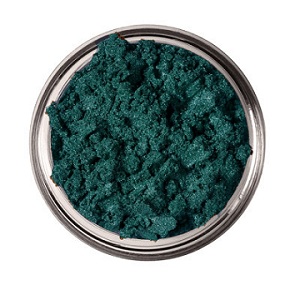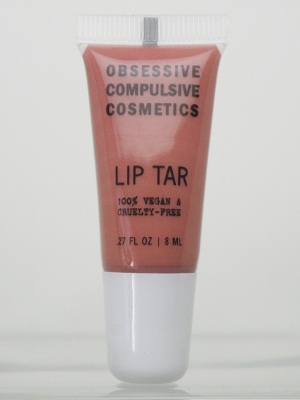Makeup: A guide to sanitary/hygienic precautions
Sanitizing Lipstick, Concealer & Other Cream Products
Dip in or spray with alcohol (91% is preferable) and then wipe completely with a clean tissue, presenting a “virgin” surface to work from. You can then remove a small piece of the product and work from a sanitary surface or work directly from the tube or palette. In the case of cream concealers and foundations where blending is expected, use of a mixing palette is preferred by most professionals.
IMPORTANT: This is a two-part process, and wiping is equally important. Contrary to popular belief, alcohol doesn’t completely kill all germs and viruses that may be present on the product. What it does help to do is remove the outer layer of the product, where most of them are. Because the base of most cream products is usually carnauba or a similar wax, most of the things you’re looking to kill are only on the surface.
Sanitizing Pencils
Prior to using, remove any residue from the sharpener and then clean the blade and inner chamber with alcohol (99% is preferable). Dip the pencil in or spray it with alcohol. Then sharpen. Before applying the pencil, again dip it in or spray it with alcohol to prevent cross contamination from residue in the sharpener. Allow the pencil to dry before using on skin.
Sanitizing Pressed Powders (Including Eyeshadow, Blush, Etc.)
Wipe the surface thoroughly with a clean tissue prior to touching it with a brush or any other applicator. Repeat prior to touching the product as necessary. Spraying with alcohol doesn’t hurt in terms of sanitary precautions but can ruin the product over time.
Working Hygienically with Loose Powders (Including Pigments and Others)
Dispense onto mixing palette or other clean surface using a spatula or other sanitary tool.

Working Hygienically with Mascaras and Liquid Liners
Use a clean disposable applicator (aka, “Spoolies” for mascara, etc.) and do not double dip. Dip once and use a new applicator each time if more product is required. Double dipping cross contaminates and defeats the purpose.
Variation: Use a regular, reusable brush and follow the same protocol of no double dipping.
Working Hygienically with Lip Gloss
Use a disposable applicator following the same protocol as above. If one is not available, dispense onto mixing palette or other hygienic surface. Never apply directly with included applicator.

Working Hygienically with Liquid Cosmetics
Dispense onto mixing palette and then apply with brush or sponge. Make sure the mouth of the bottle doesn’t touch the surface of your tools—no pressing the sponge or brushing up against it, especially after it has already been used. This applies to foundations, moisturizers or anything else that comes out of a bottle.
NOTE: “Alcohol” refers to 70% isopropyl rubbing alcohol, unless otherwise noted.
DISCLAIMER: Author is not a physician, and article is not intended as medical advice.


August 21, 2015 at 2:50 pm, FYLA said:
Just had makeup done at a Salon. They double dipped the mascara and lipgloss. The makeup “box” was used just before me and it didn’t seem like enough time to sanitize anything. They use a brush to apply makeup and I’m sure it was used on the woman before me. The makeup was at the next station but there was a partition so I can’t be sure if anything was sanitized. Are they held to any standards by the health department? Can I make a complaint to any licensing board?
November 12, 2015 at 9:46 am, OutInAPout said:
It varies by state, but typically salons are held to a higher standard when it comes to sanitation than freelance artists, as salons are sanctioned by a state board (where as freelance artists generally are not).
I can say there almost certainly should be some specific procedure put in place for sanitation of brushes and applicators. In my state, that meant use of disposable applicators when possible, and a three sink sanitation system for brushes.
If you’re truly concerned, I’d suggest you reach out to the salon manager as well as the state board in your area.
July 01, 2014 at 5:09 pm, OutInAPout said:
I will add, because it give two different suggestions in the article, that 70% alcohol is actually best for disinfection. It seems counterintuitive, but it has to do with the way the disinfectant works: by denaturing the proteins.
In concentrations over 90%, the alcohol instantly coagulates the protein on the just the outside of the cell. This forms a protective shell (like Magic Shell on ice cream). That prohibits the alcohol from further penetrating, so it can not effectively kill the cell.
70% alcohol still coagulates the proteins in the cell wall, but it does so slower. Because it takes its time, 70% alcohol is able to penetrate the bacterial cell wall and do it’s business inside of the cell.
April 13, 2014 at 6:22 pm, Ciara Quintavalle said:
A good tip I’ve always used is when you take the lid off something, always leave the mouth up so it doesn’t come into contact with any of the germs that might be on the surface.
June 12, 2012 at 9:50 pm, Spaloliva said:
brilliant tips! 🙂
March 20, 2012 at 4:04 pm, Dee Danford said:
Happy to say that as a photographer that does the makeup for my shoots…I have always followed every one of those rules without ever even reading them! Yay me!!!!
March 03, 2012 at 4:02 pm, Treats Threads said:
informative
November 09, 2011 at 4:11 am, Claire said:
What may be a slightly stupid question – how does one hygienically use a product like liquid liners? Many of the ones I have found are in a container that is much too small to dip a brush or spatula into to place product on a palette or mixing surface…
January 06, 2012 at 7:20 am, Colleen - MUA said:
I would suggest using cake liner. It is in a pressed powder form and when it is used with a mixing medium or even saline solution it is the exact same thing as liquid, which can then be applied using a small brush. Mixing medium will be your new best friend!! lol
February 18, 2012 at 12:54 am, Emma North MUA said:
Hi Claire, You can purchase disposable liquid liner tips if you prefer using liquid however as Colleen said Cake liner’s are just as good if not better x
July 01, 2014 at 5:04 pm, OutInAPout said:
Disposable applicators and no double-dipping, or decanting, is really the only way to be sanitary w/ something like a liquid liner. I stay away from them entirely in my kit, choosing gel or cakes instead (which can be more easily “portioned”).
October 31, 2011 at 10:26 am, Alanna said:
love it!!
September 30, 2011 at 5:16 am, Rich Diltz said:
Excellent advice from a real pro!
September 28, 2011 at 1:44 am, PrettyInInkByBeth said:
I think this is awesome!